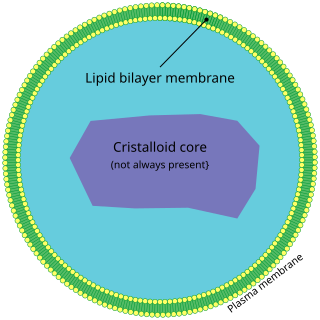Top Qs
Timeline
Chat
Perspective
Rhizomelic chondrodysplasia punctata
Recessive genetic condition From Wikipedia, the free encyclopedia
Remove ads
Rhizomelic chondrodysplasia punctata is a rare developmental brain disorder characterized by abnormally short arms and legs (rhizomelia), seizures, recurrent respiratory tract infections and congenital cataracts.
The cause is a genetic mutation that results in low levels of plasmalogens, which are a type of lipid found in cell membranes throughout the body, but whose function is not known.[2]
Remove ads
Signs and symptoms
Rhizomelic chondrodysplasia punctata has the following symptoms:[4][1]
- Bilateral shortening of the femur, resulting in short legs
- Post-natal growth problems (deficiency)
- Cataracts
- Intellectual disability
- Possible seizures
- Possible infections of respiratory tract
Genetics
This condition is a consequence of mutations in the PEX7 gene, the GNPAT gene (which is located on chromosome 1) or the AGPS gene. The condition is acquired in an autosomal recessive manner.[2]
Pathophysiology

The mechanism of rhizomelic chondrodysplasia punctata in the case of type 1 of this condition involves a defect in PEX7, whose product is involved in peroxisome assembly. There are 3 pathways that depend on peroxisomal biogenesis factor 7 activities, including:[4][5][verification needed]
- AGPS (catalyzes plasmalogen biosynthesis)
- PhYH (catalyzes catabolism of phytanic acid)
- ACAA1 (catalyzes beta-oxidation of VLCFA - straight)
Diagnosis

The diagnosis of rhizomelic chondrodysplasia punctata can be based on genetic testing[6] as well as radiography results, plus a physical examination of the individual.[3]
Types
Remove ads
Treatment
Management of rhizomelic chondrodysplasia punctata can include physical therapy; additionally orthopedic procedures improved function sometimes in affected people.[4]
Prognosis
The prognosis is poor in this condition,[3] and most children die before the age of 10.[4] However, some survive to adulthood, especially if they have a non-classical (mild) form of RCDP.[4]
Children with classical, or severe, RCDP1 have severe developmental disabilities. Most of them achieve early developmental skills, such as smiling, but they will not develop skills expected from a baby older than six months (such as feeding themselves or walking).[4] By contrast, children with non-classical mild RCDP1 often learn to walk and talk.[4]
Remove ads
See also
References
Further reading
External links
Wikiwand - on
Seamless Wikipedia browsing. On steroids.
Remove ads

